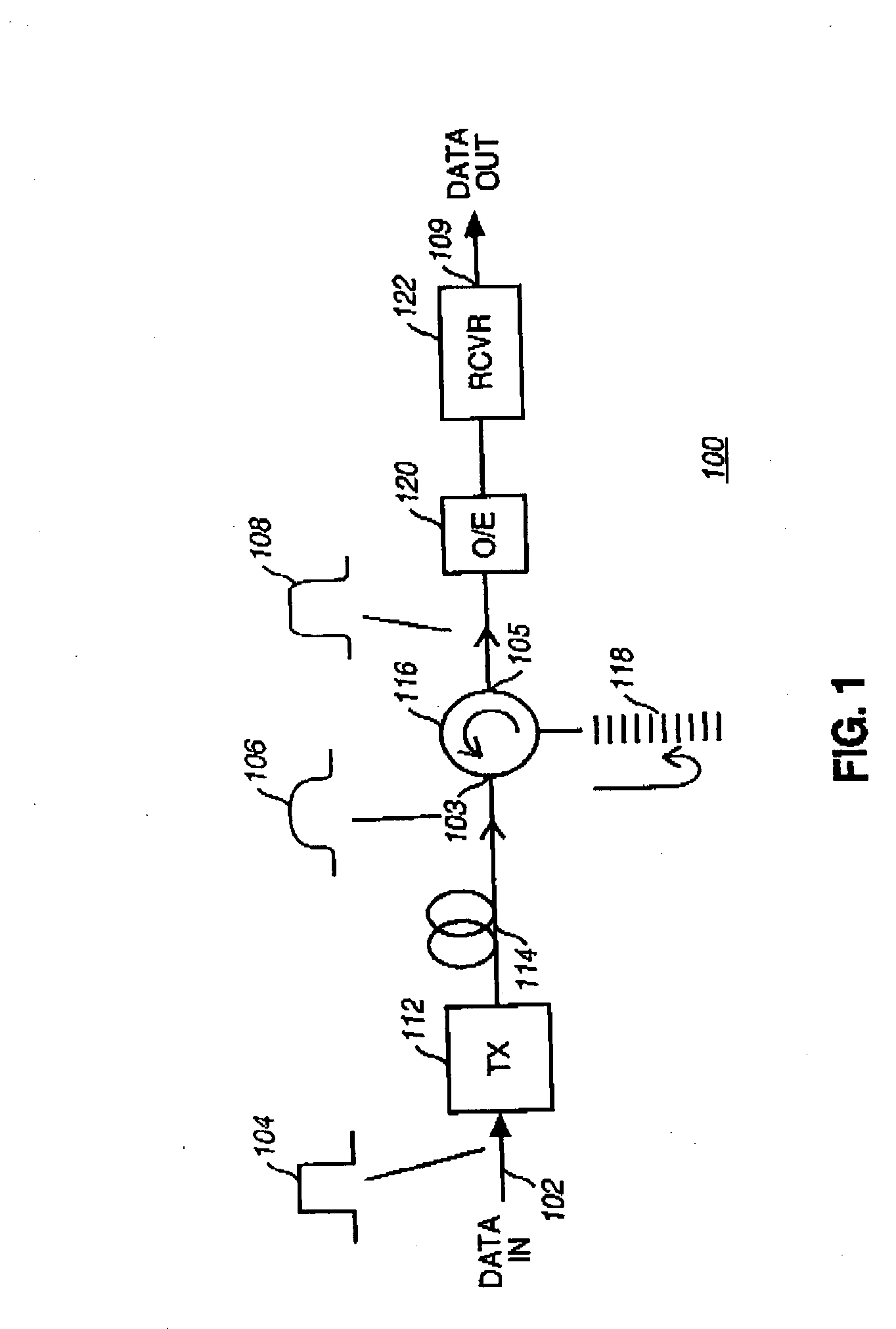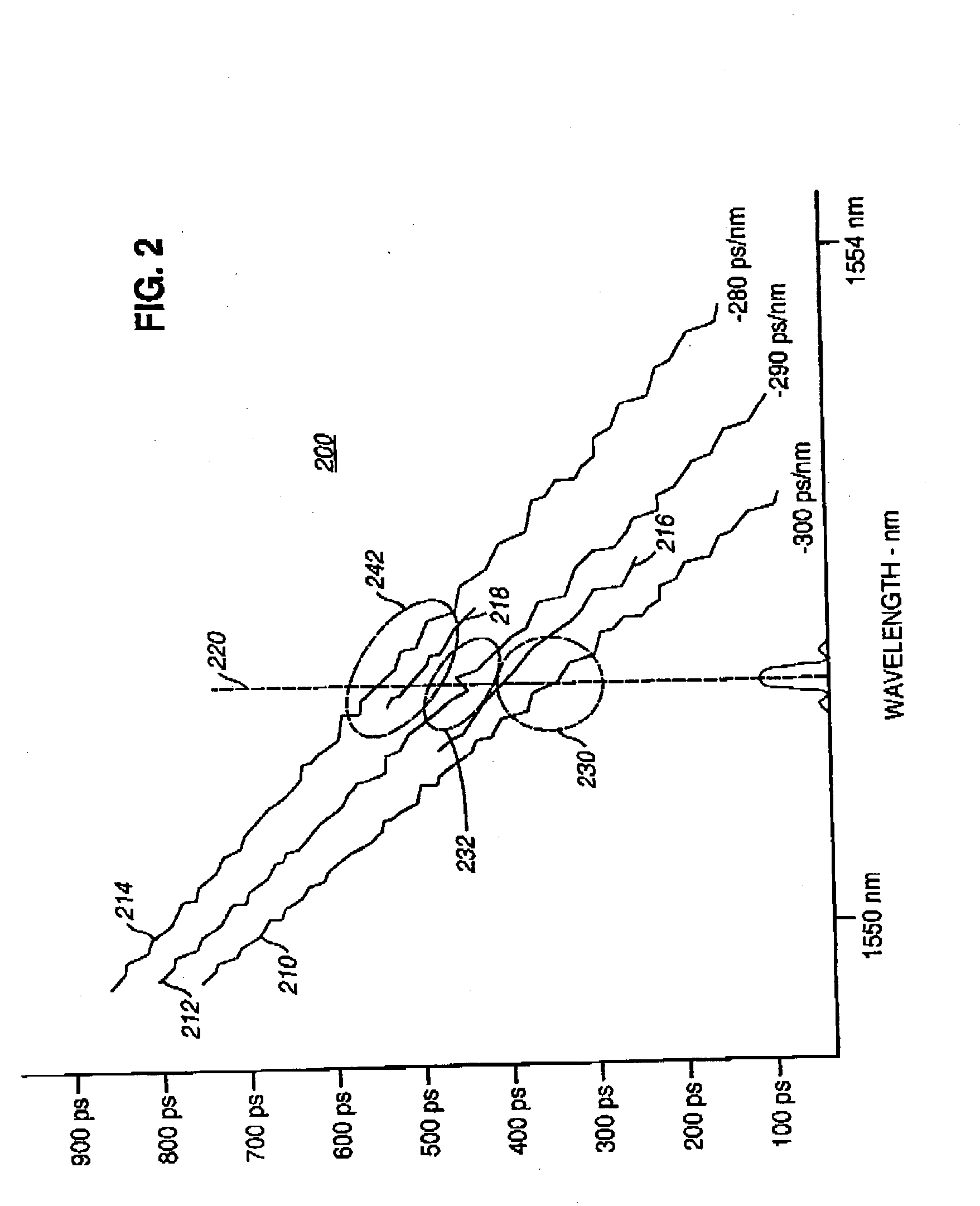Characterization and control of optical dispersion compensating element
a technology of optical dispersion compensation and optical communication system, applied in the field of chromatic dispersion compensation in optical communication system, can solve the problems of limited usable bandwidth of fiber, non-zero dispersion values at all other wavelengths, and dispersion shifted fiber offering only limited relief in a multi-wavelength environmen
- Summary
- Abstract
- Description
- Claims
- Application Information
AI Technical Summary
Benefits of technology
Problems solved by technology
Method used
Image
Examples
Embodiment Construction
[0026] The making and using of various illustrative embodiments are discussed in detail below. It should be appreciated, however, that the present invention provides many applicable inventive concepts that can be embodied in a wide variety of specific contexts. The specific embodiments discussed are merely illustrative of specific ways to make and use the invention, and do not limit the scope of the invention. It will be apparent that many of the present teachings may be applicable to the characterization of dispersion compensating modules and tunable dispersion compensating modules, regardless of whether or not a fiber Bragg grating is employed as the dispersion-affecting element.
[0027]FIG. 1 illustrates a typical optical communications link 100 employing a fiber Bragg grating to compensate for dispersion caused by propagation through a long optical fiber. Optical transmitter 112 emits an optical carrier signal of a particular wavelength. This carrier signal is intensity modulated...
PUM
 Login to View More
Login to View More Abstract
Description
Claims
Application Information
 Login to View More
Login to View More - R&D
- Intellectual Property
- Life Sciences
- Materials
- Tech Scout
- Unparalleled Data Quality
- Higher Quality Content
- 60% Fewer Hallucinations
Browse by: Latest US Patents, China's latest patents, Technical Efficacy Thesaurus, Application Domain, Technology Topic, Popular Technical Reports.
© 2025 PatSnap. All rights reserved.Legal|Privacy policy|Modern Slavery Act Transparency Statement|Sitemap|About US| Contact US: help@patsnap.com



